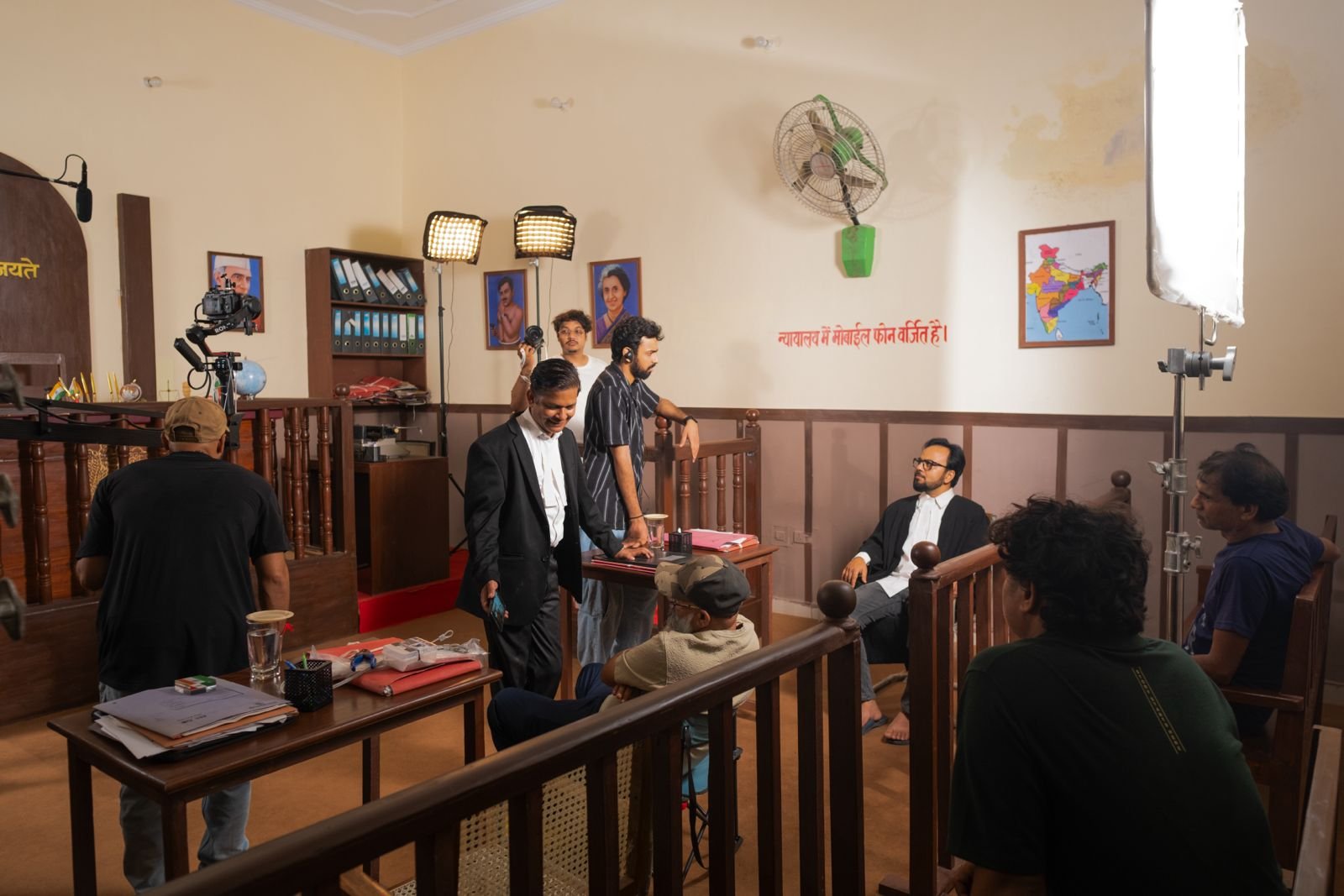Cinema is fundamentally a visual art, and a large number of the influential stories told are devoid of dialogue. From the time of silent film’s golden age to now with blockbusters, the skill of silent storytelling continues to be important for filmmakers. No matter what your aim might be, creating Bollywood films, short films, or Punjabi films, mastering non-dialogue narratives can strengthen your storytelling, making you more dependent on visuals, sound, and emotions to communicthe story.
For those studying cinema, mastering silent storytelling is much more than a creative exercise—it’s an important tool to better their grasp of filmmaking. In this blog post, we are going to analyze why all filmmakers should use non-dialogue narratives to create meaningful films that rely on visual storytelling.
What Makes Silent Storytelling Important
During the film production process, dialogue functions as an element of what a filmmaker brings to their portfolio. An effectively designed visual narrative crosses over language divides, cultural variations, and even periods. Influential storytelling is impressive because emotions and images translate everywhere, no matter what language someone speaks.
The power of non-dialogue narratives:
- Universal Appeal: A story told in visuals can access a worldwide audience free from the need for either translation or subtitles.
- Focus on Emotion: If dialogue is not possible, film creators use gestures, expressions, and visual markers to express emotions.
- Pure Cinematic Experience: The practice of silent storytelling returns filmmaking to its essentials, caring deeply about how every visual ingredient—shoot, sound, and movement—vocates.
Courses in film production, film direction, or screenwriting can improve the understanding of cinema as a medium for individuals enrolled, by teaching the principles of silent storytelling. Plenty of the top film institutes in India encourage their students to create short films or segments that depend solely on visual narratives to improve this vital skill.
The Complication in Expressing a Story Without Words
This isn’t an easy task: creating a ‘silent story.’ Students in cinema classes often have to face the challenge of narrating a complete plot without using dialogue. This exercise drives filmmakers to consider visual thinking, to emphasize the strength of an image, and to tell compelling narratives through activity, response, and mood.
Key challenges of non-dialogue narratives:
- Conveying Complex Emotions: To unequivocally communicate feelings such as fear, guilt, or love, filmmakers who operate without language find it necessary to use facial and body movements of actors along with the positioning of cameras.
- Building Tension or Drama: Filmmakers have to seek out inventive approaches to build tension when little is present, just as dialogue heightens tension in movies. There is great meaning attributed to lighting, shadows, and how elements evolve through time.
- Engaging the Audience Visually: Each frame is important in non-dialogue stories. All the images we film must resonate with audiences, telling visual stories that are wordless.
Film production course students typically receive silent films as project assignments, pushing them to think imaginatively. A hardship in creating an engaging story without dialogue leads to these filmmakers gaining more flexibility and improving their storytelling skills.
Becoming skilled in Visual Storytelling
A skill in various visual storytelling techniques is necessary for filmmakers to tell a story without using dialogue. To build visually engaging stories, it is crucial for students in filmmaking, film directing, or screenwriting to see these techniques as fundamentally important.
Key visual storytelling techniques:
- Expressive Cinematography: In silent films, your main storytelling instrument is the camera. The associated factors are your layout of a shot, your method of camera movement, and your angle selection, all of which have a consequence on the viewer’s perception of the story. From a more detailed level, shots might stand for either togetherness or conflict; but, wide shots may show the entire context or underline experiences of seclusion.
- Symbolism and Metaphors: Visual symbols and metaphors are key elements in the communication of deeper meanings within silent storytelling. Items, tones, or modeled behaviors can represent symbolic meaning, carrying concepts or feelings that call for no explanation.
- Body Language and Facial Expressions: Actors are left with merely their physicality and facial expressions to express their ideas or feelings, where dialogue is unavailable. Learning cinema, students can develop better direction skills by teaming up with actors on non-verbal signals.
- Lighting and Color: Both lighting and colors help to set the mood and create an atmosphere in a scene, and colors can provoke specific types of emotional feedback. A relevant illustration is that soft and soothing illumination conveys safety or romance, while harsh and icy lights usually trigger feelings of anxiety or tension.
- Editing for Impact: Editing is important for silent storytelling. A compelling tempo in transition cuts, together with the display of visual assets, can generate suspense, induce feelings, or expressively report a story, all without any spoken language.
Outstanding illustrations of Silent Storytelling
Previously in film, a number of its most important scenes presented themselves without words. Current Indian cinema or films from Punjab might strongly depend on dialogue, but the essential ingredients of fantastic filmmaking continue to be visual storytelling.
Classic Examples:
- “Pather Panchali” (1955): Despite having reduced discourse and better visual and auditory components, Satyajit Ray’s Indian classic shows the hardships of a rural family. Ray’s skill in maintaining silence allows the film to be overwhelmingly emotional and understandable by people everywhere.
- “The Artist” (2011): At present, The Artist pays tribute to silent cinema through a story about the struggles of a silent film actor in the talkies period. Via expressive performances, symbolism, and excellent cinematography, the film symbolizes advanced feelings and themes successfully, absent any dialogue.
- “Life of Pi” (2012): If we skipped transitions, we would clearly see that, even though Life of Pi is not a completely silent movie now, it does contain extensive passages devoid of words, particularly when Pi is at sea. The use of a variety of visuals, from broad ocean horizons to in-depth shots of Pi’s face, tells the tale in a style that dialogue does not achieve.
The Conveniences of Excelling at Quiet Narration for Students.
At the best film institutes in India, students can find that becoming adept at non-dialogue narratives is a pivotal moment in their education. Here’s why:
Benefits for student filmmakers:
- Stronger Visual Sense: Getting a basic understanding of the visual representation of emotions and narratives helps filmmakers make better decisions. This talent counts regardless of whether you are into Bollywood cinema, short videos, or music clips.
- Enhanced Editing Skills: For silent films to tell their story well, the editing must be flawless. Those studying film editing will see that mastering the art of silent storytelling improves their editing instincts dramatically.
- Greater Emotional Impact: Films that choose to tell stories visually typically engage their audience more deeply by stirring emotions and increasing their interaction on a physical level. Cinema students can use these skills across all their projects, including Bollywood films and film direction subjects.
- Cultural Flexibility: The making of films that appeal to viewers across the planet benefits from using language.
Conclusion: Embrace the Silence
This technique of silent storytelling isn’t only historic—it’s a potent skill that all today’s filmmakers must learn. Taking up the challenge of storytelling with no dialogue requires students learning cinema to lean heavily on visual storytelling, deepening their skills and making them more versatile filmmakers. Whether you’re active in Bollywood films, Punjabi films, or film production courses, becoming adept at silent storytelling will spark your creativity and help you make films that express much despite remaining silent.
At Creators Pathshala, all our film direction courses, film editing courses, and filmmaking courses stress the importance of refining every part of filmmaking, including non-dialogue narratives. Engage with us to discover the powerful capabilities of cinema and understand how to tell stories that engage audiences using no speech.



